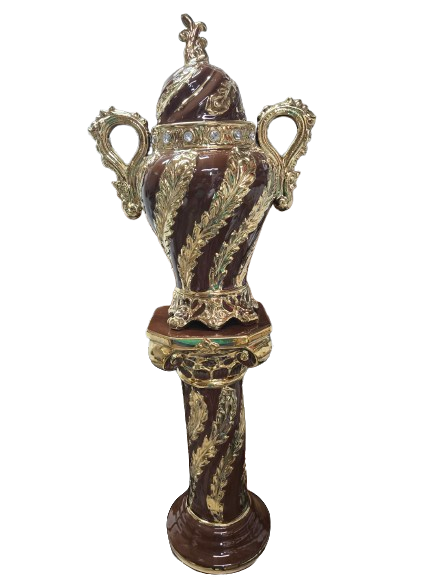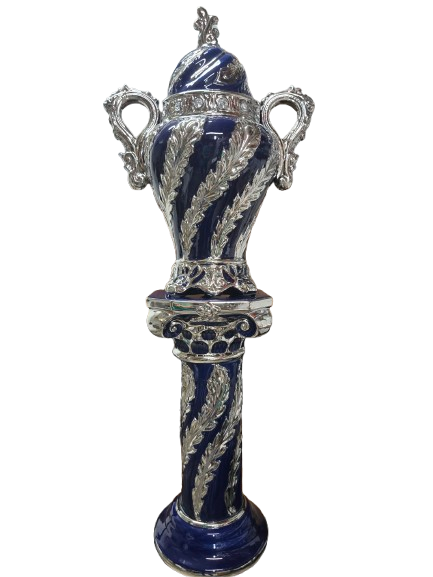Exploring the Mystical Path of Babalú-Ayé: Orisha
Welcome to an enlightening journey exploring the captivating world of Babalú-Ayé, one of the revered Orishas in the Yoruba religion. Known for his deep association with healing and the mysteries of life, Babalú-Ayé is both feared and beloved. In this blog, we will unravel the many layers of his mystical path, understanding the significance he holds in the spiritual world.
Understanding the Origins and Mythology of Babalú-Ayé
The origins of Babalú-Ayé are deeply rooted in the rich traditions of the Yoruba religion, tracing back to ancient West Africa. Known as the Orisha of healing and disease, Babalú-Ayé’s narratives reveal a complex character who embodies both suffering and compassion. His mythological stories highlight his journey through adversity and his transformation into a figure of hope and renewal.
Babalú-Ayé, also known as Ṣọpọna or Obaluaiyé, holds a significant position in the Yoruba pantheon. His mythos is one of dualities: as a deity feared for his power over diseases like smallpox, yet equally revered as a healer providing cures and relief. Among his devotees, he is celebrated for his ability to balance these opposing forces, which is vividly captured in the stories of Babalú-Ayé as both a bringer of life-giving energy and the chilling hand of sickness.
In various cultures, the name of Babalú-Ayé changes, yet his essence remains. The Fon people call him Sakpata, associating him with the Earth and burial traditions. This dual role highlights the orisha’s connection to life cycles—creation and decay. Examining these narratives, one finds that Babalú-Ayé’s presence serves as a bridge between the physical and spiritual realms, deeply influencing Yoruba cultural practices.
The Symbolism and Attributes of Babalú-Ayé
Babalú-Ayé is often depicted with crutches and a body covered in sores, symbolizing his own battles with illness. Yet, he is also adorned with beads and a raffia garment, signifying his strength and authority. These symbols reflect his dual nature as both a harbinger of disease and a powerful healer, teaching us about the balance between suffering and recovery.
The imagery associated with Babalú-Ayé suggests a powerful narrative about endurance and transformation. His crutches remind us of the vulnerabilities of humanity, while his ornate garb showcases resilience and triumph over adversity. This juxtaposition can also be seen in his offerings—often grains and other staples—left by devotees as a tribute to not only appease his wrath but to seek his blessings for health. Such rituals underscore the orisha’s complex role as both feared and cherished.
An intriguing aspect of Babalú-Ayé’s symbolism lies in his connection with warmth and heat. Fever and heat are physical manifestations of his presence, representing a natural form of healing corresponding to the Earth’s life-giving properties. His power is invoked during daylight, a time when his energies are believed most potent. This aspect illustrates the profound understanding of balance and healing in his worship—how heat is used both as a force for destruction and a beacon of life.
Rituals and Celebrations Honoring Babalú-Ayé
Faithful followers celebrate Babalú-Ayé through vibrant rituals and ceremonies, which are especially prevalent in regions such as Cuba and Brazil. These celebrations often involve music, dance, and offerings designed to invoke his healing powers and show reverence for his role in protecting communities from illness.
In Cuba, Babalú-Ayé’s most significant celebration occurs every December 17th, where thousands embark on a pilgrimage to the Church and Leprosorium of Saint Lazarus. This pilgrimage, rooted in Afro-Cuban Santería traditions, encapsulates a blend of cultural resilience and religious devotion. Devotees honor him with elaborate feasts and rituals, epitomizing the gratitude and respect for the protection and healing they believe he provides.
In Brazil, the Candomblé tradition paints a vivid picture of his impact, with followers donning clothing made of palm straw—a symbol of his humility and past ailments. These garments serve as a reminder of his enduring spirit and beauty, concealed yet apparent. It’s in these festivals that one witnesses the flourishing of diverse cultural expressions, with Babalú-Ayé’s rituals interwoven with dynamic performances, song, and dance.
Babalú-Ayé’s Influence in Modern Culture
Babalú-Ayé’s influence extends beyond religious spheres, as he has permeated various aspects of modern culture, from art to music. His teachings resonate with contemporary issues such as public health and community care, illustrating the timeless relevance of his symbolic legacy.
In modern times, Babalú-Ayé’s influence can be observed in various art forms, where his image is utilized to address themes surrounding illness and healing. Contemporary artists often draw on his symbolism to explore these complex themes, paralleling the orisha’s ancient narratives with today’s discussions on wellness and health crises. This demonstrates how his influence continues to inform, inspire, and incite change in societal views regarding health and community support.
Embracing the Wisdom of Babalú-Ayé
In conclusion, Babalú-Ayé stands as a symbol of healing, resilience, and the interconnectedness of life’s journey. His mystical path teaches valuable lessons about compassion and the power of the human spirit to overcome adversity. By exploring his mythology and cultural significance, we gain deeper insights into the complexities and beauty of the Yoruba religion.





































Dejar un comentario